How to Set Up Google Analytics on a WordPress Website (4 Steps)
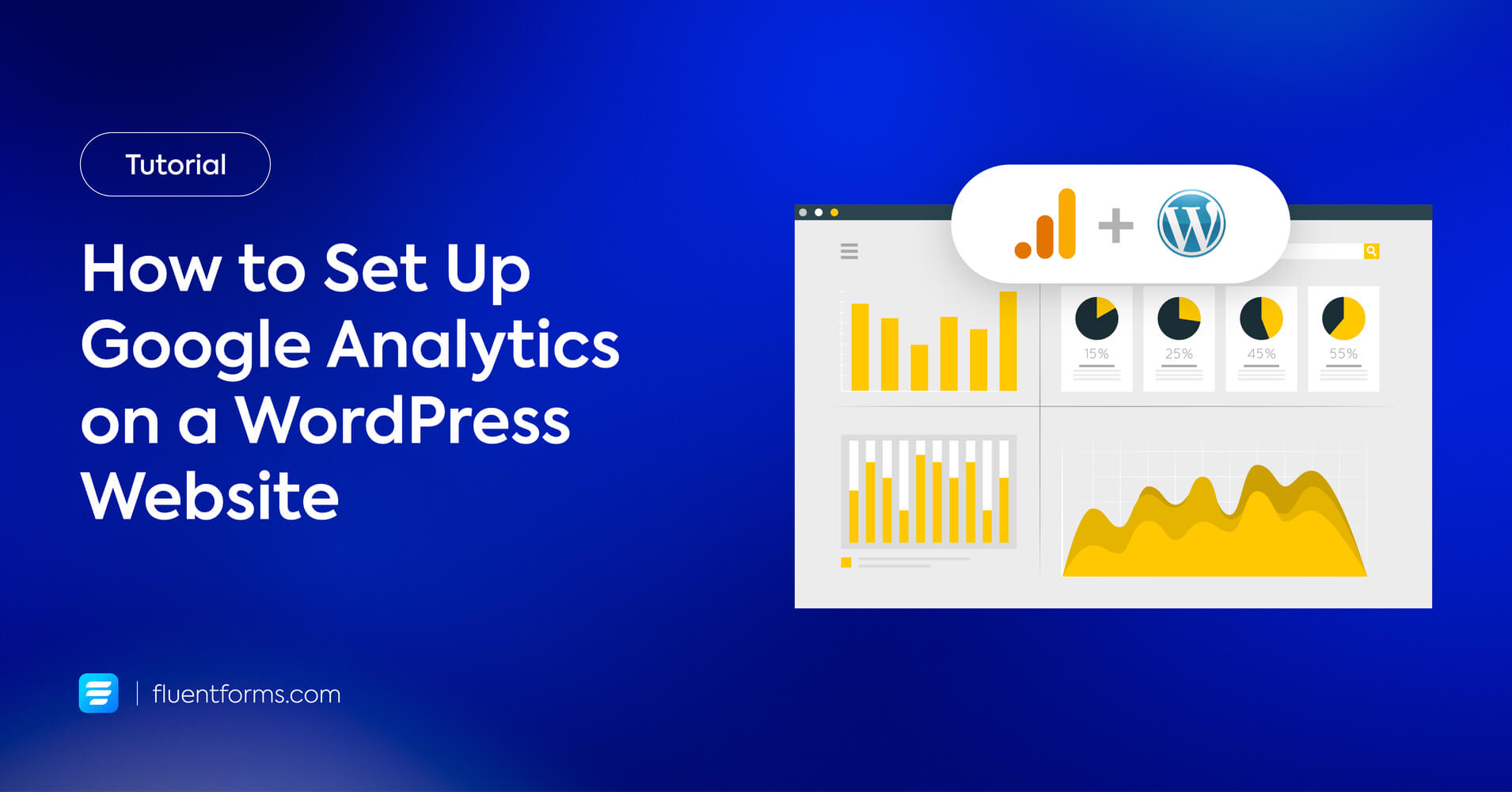
Have you ever thought of where your website visitors come from, what they click on, or how long they stay? As a website owner, understanding your audience is vital for making informed decisions for your business.
You need the right tool that can help you do it and this is where Google Analytics comes in. This powerful tool from Google gives you invaluable insights into your website’s performance and helps you optimize your content, improve user experience, and ultimately, achieve your goals.
But how do you set up Google Analytics on a WordPress website? This blog will walk you through the step-by-step process.
Why Should You Set Up Google Analytics?
Before learning how to connect Google Analytics to a website, let’s first get introduced to this incredible tool. Google Analytics is a free tool from Google that provides detailed insights into your website visitors, including demographics, behavior, and interests, to understand the customer journey and improve marketing ROI.
By setting up Google Analytics on your website, you can:
- Gain insights into customer engagement
- Utilize machine learning for improved ROI
- Integrate seamlessly with other Google solutions like Google Ads, Google Cloud, Google Search Console, etc.
- Streamline data analysis and collaboration.
Google Analytics also provides intuitive reporting features, real-time monitoring, and detailed acquisition and engagement reports. Using these features, you can make informed decisions, optimize marketing strategies, and drive business growth.
Now that you know why setting up Google Analytics on your website is necessary, let’s take the next step in learning how to set it up on your WordPress site.
How to Set Up Google Analytics in WordPress
For many years, Universal Analytics (UA) has been the dominant website analytics platform since 2005. However, Google Analytics 4 (GA4) has emerged as the successor to UA.
If you have your website built in WordPress, you can follow the steps below to set up Google Analytics 4 on your site.
Step 1: Create a Google Analytics account
Go to Google Analytics. You’ll find the link to sign up for a free Google Analytics account.

Click on the Get started today button.
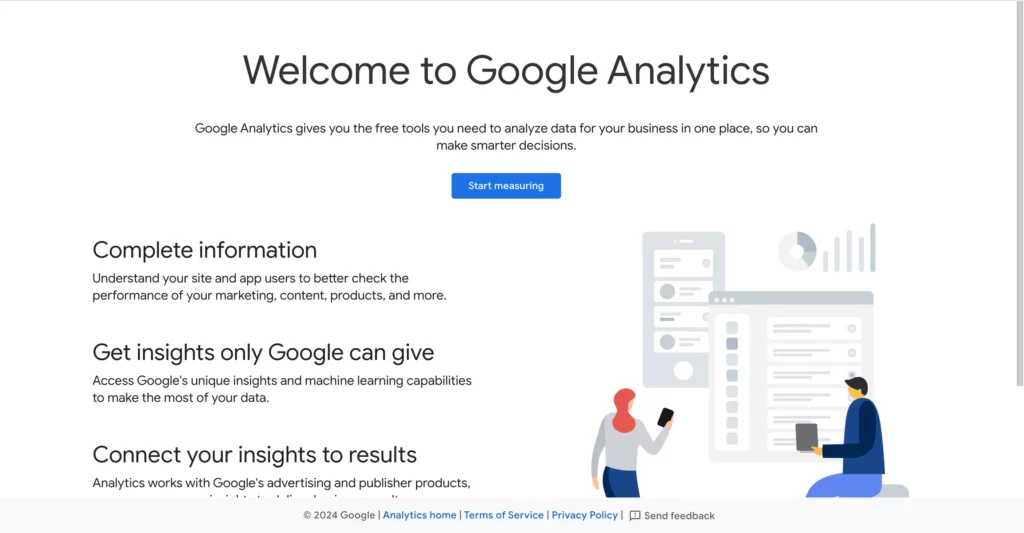
Then click on the Start measuring button. You will see a page similar to the one below.
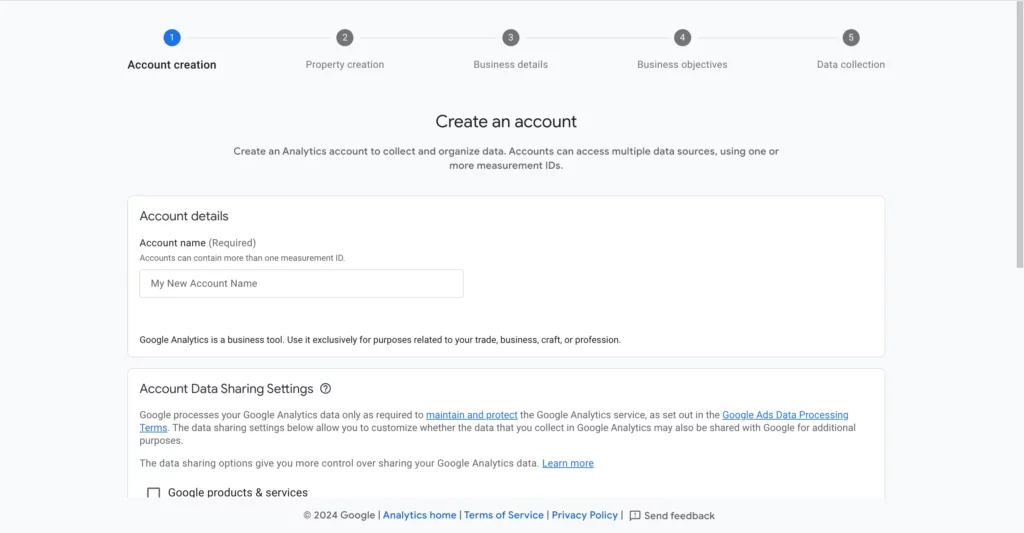
Next, enter the name of your Google Analytics account. Google Analytics will also display various options for sharing account data.
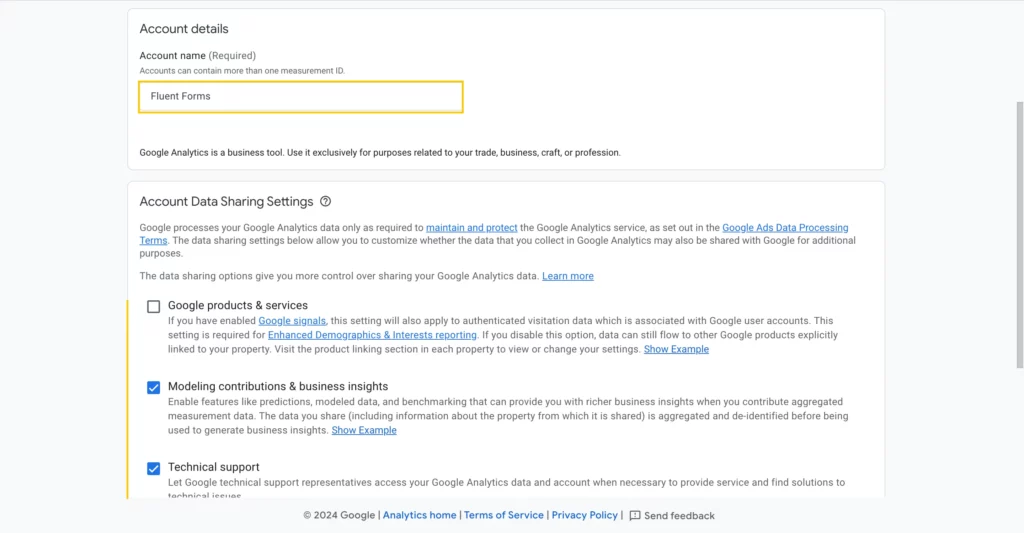
These options provide you with the ability to manage the sharing of your Google Analytics data. You can stick with the default settings and proceed to the next step.
Step 2: Set up your Google Analytics property
At this step, you need to create a Google Analytics 4 property. Now you might be wondering what is a property of Google Analytics? Well, a property represents a website or a mobile application that you want to track using Google Analytics. Simply input a property name, choose your reporting time zone and currency, and proceed by clicking the Next button.
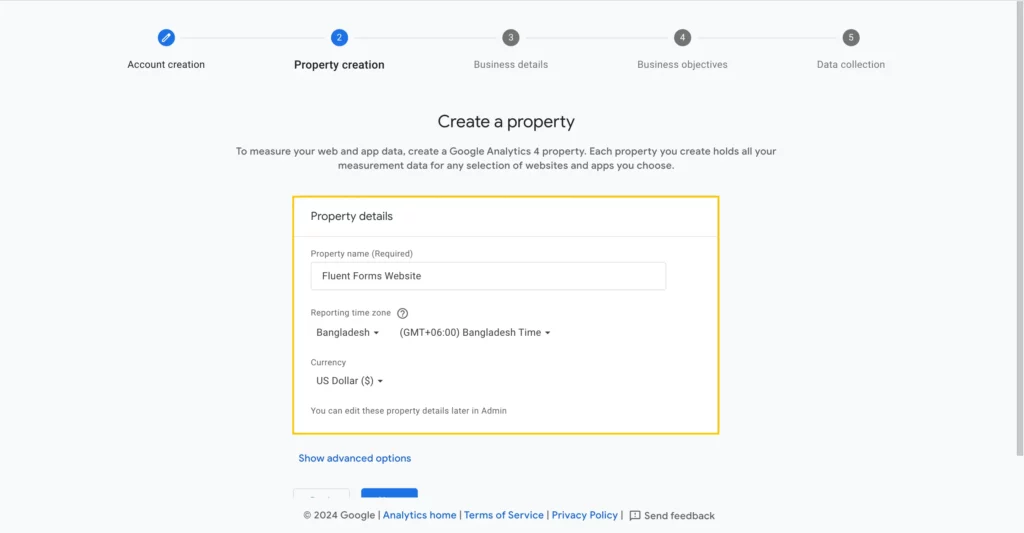
On the following page, you’ll be required to choose an Industry category and select a Business size.
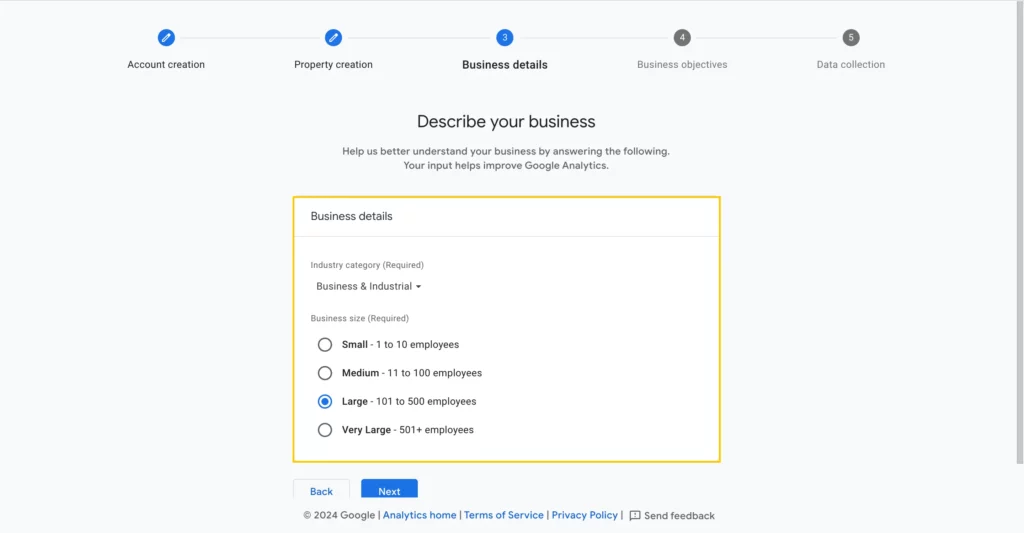
Following that, you’ll be prompted to select your business objectives and specify how you plan to utilize Google Analytics within your business.
You can choose from the following options:
- Generate leads
- Drive online sales
- Raise brand awareness
- Examine user behavior, or
- Get baseline reports
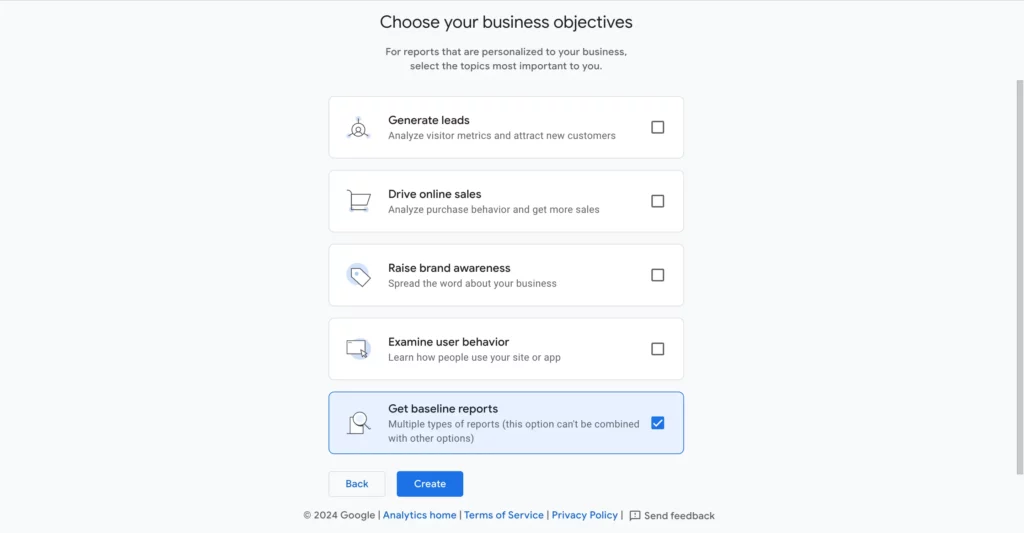
You can choose multiple options or select all those that align with your requirements.
We suggest opting for the Get baseline reports option to ensure that all Google Analytics reports are populated in your account.
Click on the Create button and accept the terms and conditions.
Step 3: Set up the data stream
In this step, choose a platform from where you will be collecting data. You can either choose web, android, or iOS app. As you are setting up Google Analytics on your website, select the Web option.
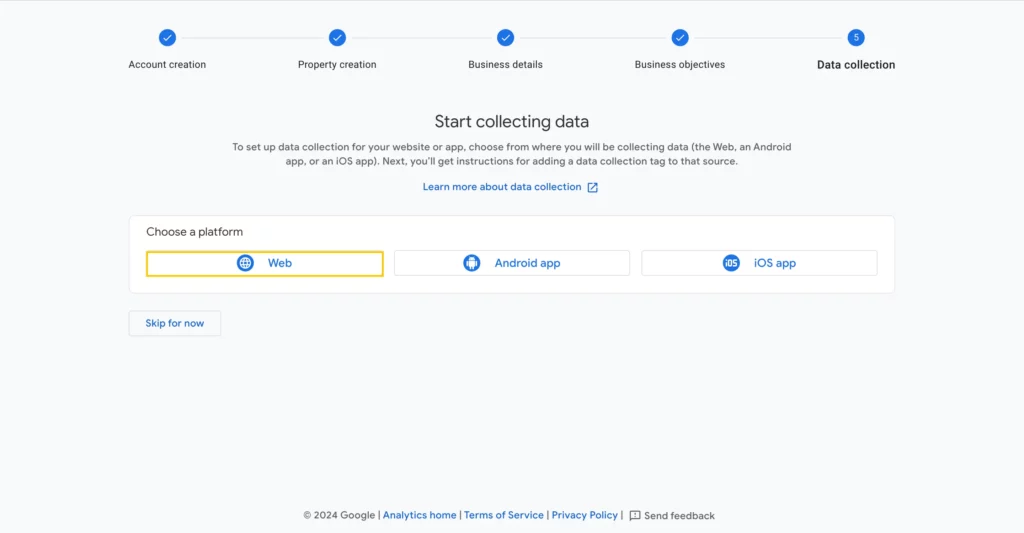
On the following screen, you’ll need to provide your Website URL and the stream name, which can be the name of your website.
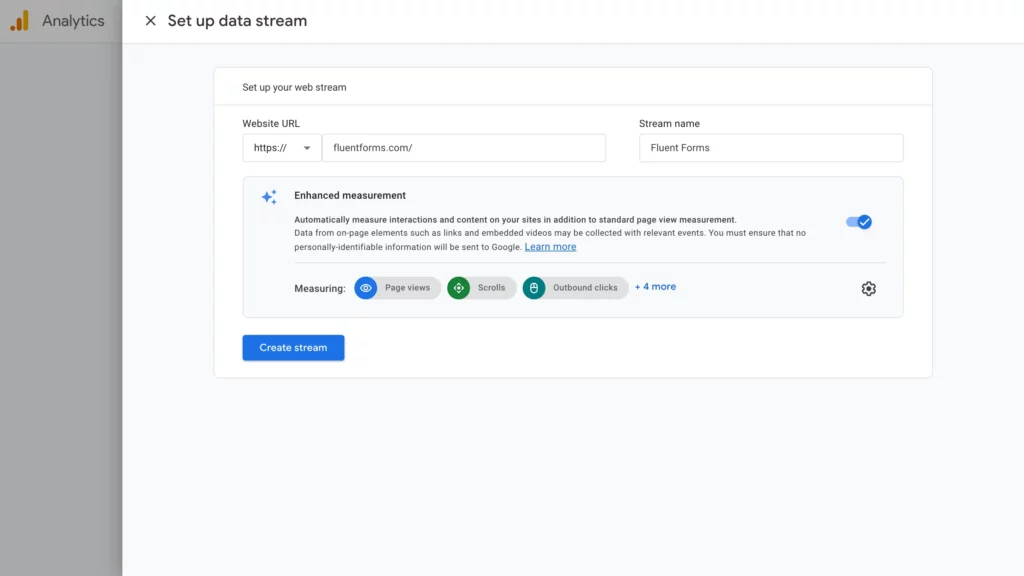
You’ll see that the Enhanced measurement option is enabled by default. This feature automatically tracks content and interactions on your site in addition to standard page view measurement. If you prefer Google to only track page views, you can turn off this feature.
Now click Create Stream.
You will see the Web stream details window as shown below.
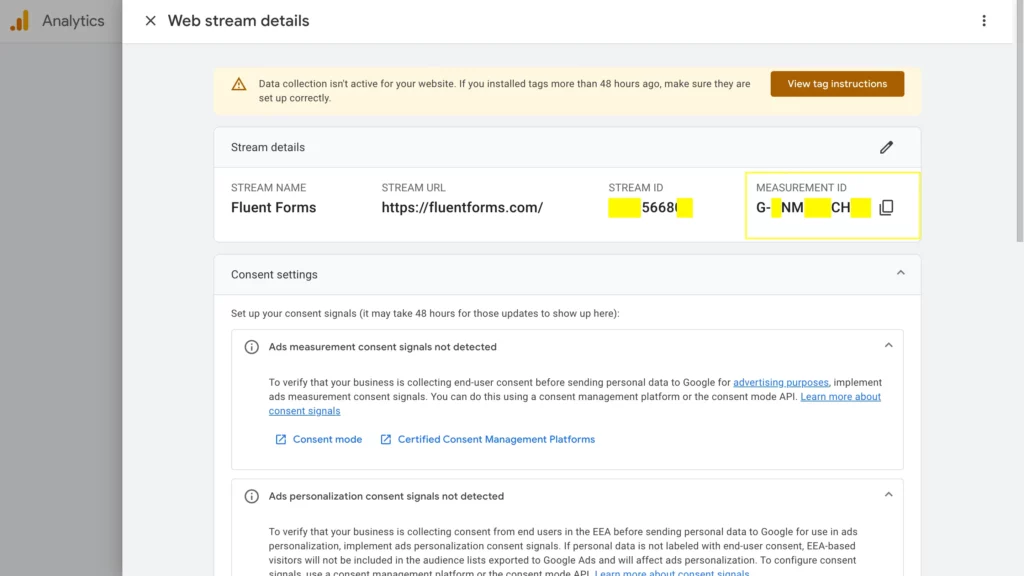
In this window, you will get a Measurement ID to connect Google Analytics to WordPress. Copy this measurement ID as you’ll need this information later.
With your Google Analytics account set up and the measurement ID in hand, it’s time to set up Google Analytics on your WordPress site. There are two primary methods to do this:
- Method 1: Using a Google Analytics Plugin like Site Kit. This is the most user-friendly approach.
- Method 2: Manual setup. In this method, you have to add the measurement ID directly to your website’s code.
Step 4: Set up Google Analytics in WordPress using a plugin
To set up Google Analytics using Site Kit, log in to your website’s admin panel. Go to Plugins and click on Add New Plugin. Search for “Site Kit” and you will see the plugin appear.
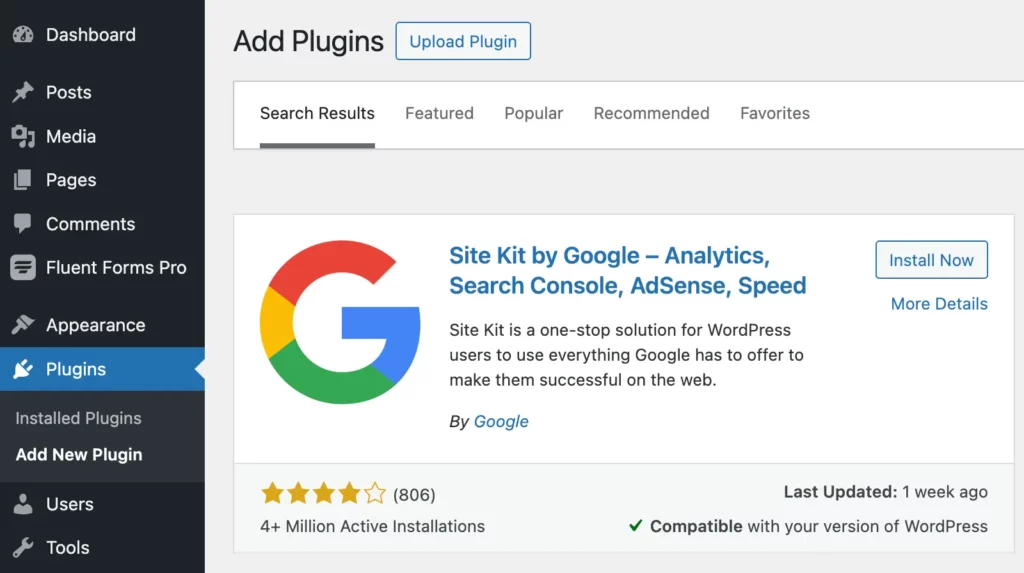
Click Install Now and then Activate. Now go to Site Kit from the left sidebar of your WordPress admin dashboard.
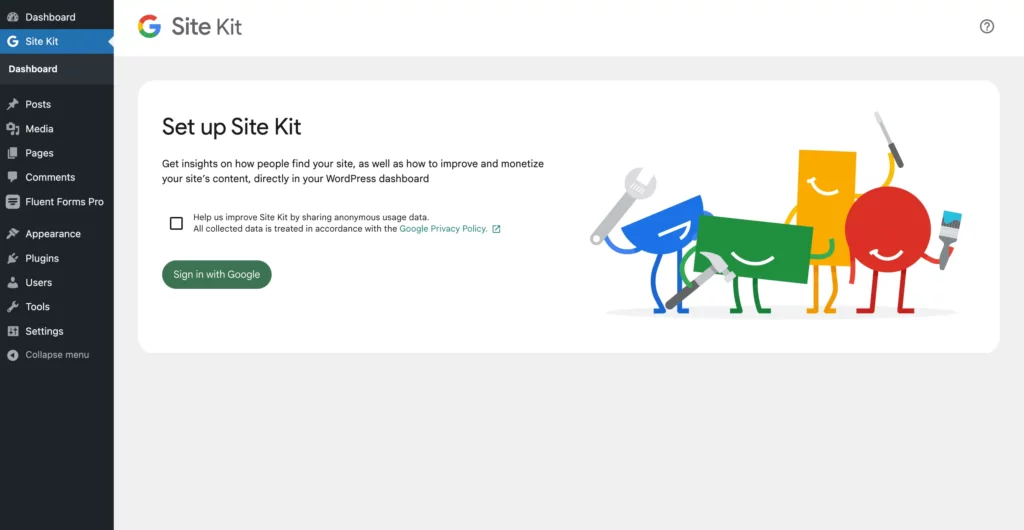
Click the Sign in with Google button and allow the necessary permissions to sign in using your Google account.

Now click Verify, Allow, Set Up and Next on the following pages.
Once you are done setting up Search Console, you have to connect your Google Analytics account, property and web data stream.
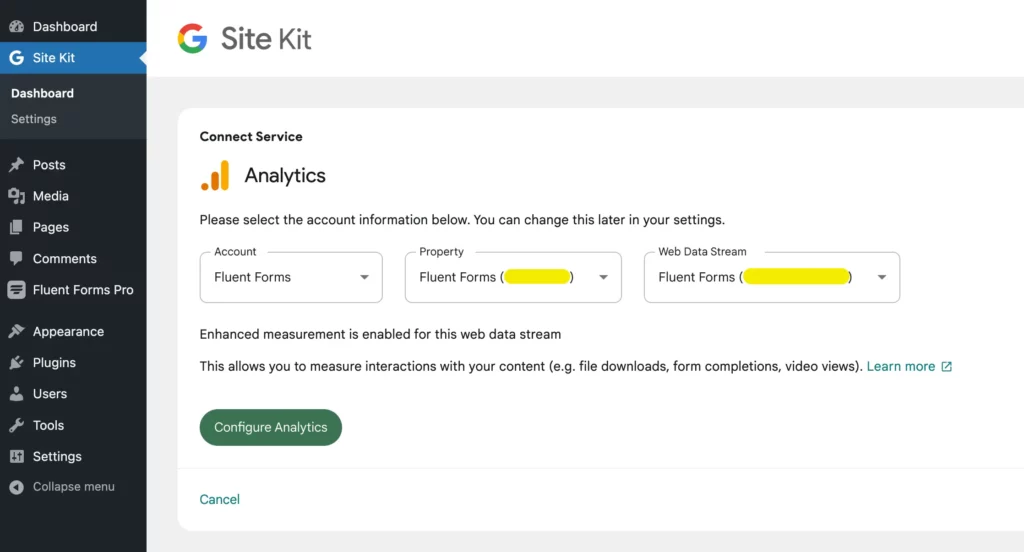
Click on Configure Analytics. It’s important to note that it can take up to 72 hours for Google Analytics to start collecting data.
Step 4 alternative: Set up Google Analytics manually
If you don’t want to use any plugin to set up Google Analytics, you can do so manually by installing Google Tag on your website.
From the Web stream details screen, click the View Tag Instructions button, and you’ll presented with two ways to add the tag:
- Install manually
- Install with a website builder or CMS
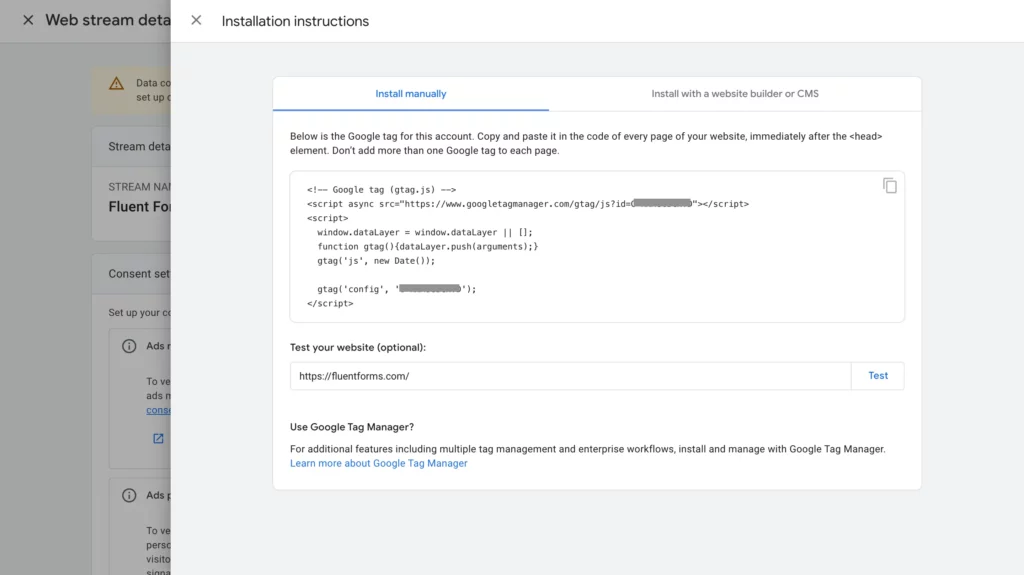
Copy the Google tag provided in the Installation instructions window.
Now go to the Theme File Editor. You can access this either from the WordPress dashboard or using the File Manager provided by your hosting control panel depending on your theme. You need to paste the Google tag that you copied earlier in the header.php file right before the </head> tag.
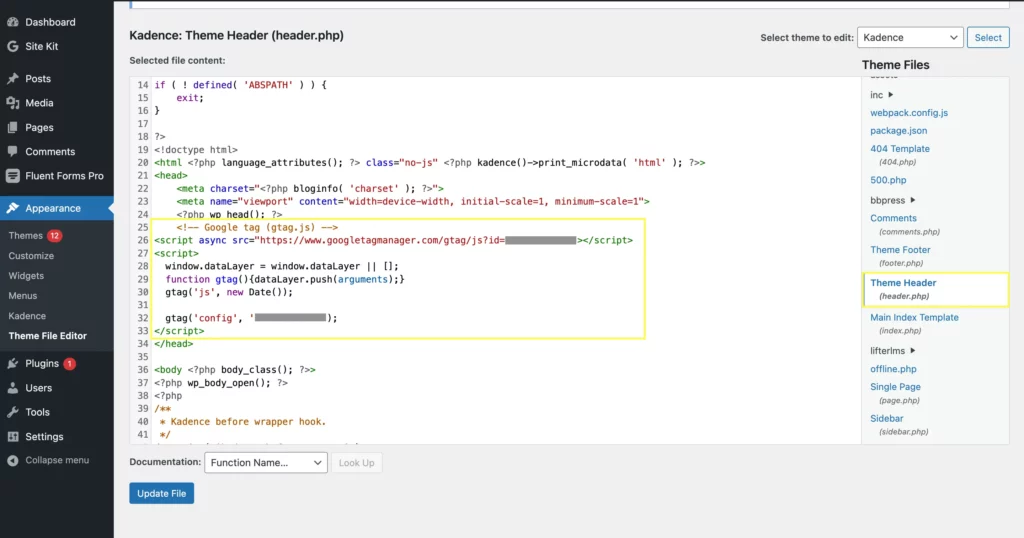
Click on Update File and that should complete the installation of Google Analytics on your WordPress website.
Once the installation is finished, be patient and wait a few hours before you can see the data on the Google Analytics dashboard.
Essential Understanding of Google Analytics 4
Google Analytics 4 offers a wide range of data related to your website. To leverage these data effectively, you should familiarize yourself with them first.
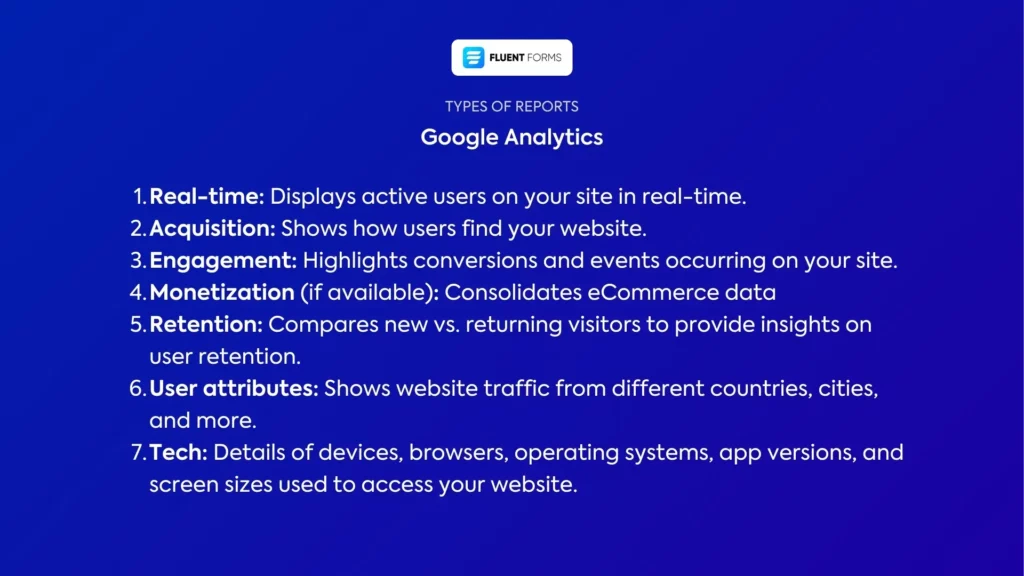
Let’s get introduced to different types of reports. Below are the seven types of reports Google Analytics provides you:
- Real-time: Real-time report displays active users on your site in real-time.
- Acquisition: Shows how users find your website, including organic, referral, email, and affiliate traffic.
- Engagement: Highlights conversions and events occurring on your site.
- Monetization (if available): Consolidates eCommerce data, including in-app purchases and publisher ads.
- Retention: Compares new vs. returning visitors to provide insights on user retention.
- User attributes: Shows website traffic from different countries, cities, and more, including gender breakdown and interest reports.
- Tech: Details of devices, browsers, operating systems, app versions, and screen sizes used to access your website.

Now, here are some examples of information that you can get from your Google Analytics reports:
- Number of active users on your site in real-time
- Visitor trends over time
- Age, gender, and geographic location of your audience
- Traffic origins showing where your visitors come from
- Page-specific analytics including the pages mostly visited and duration of each visit
- Performance metrics such as bounce rate, click-through rate, and conversion rate.
You should also know some key terminologies used in Google Analytics:
- Sessions: A session refers to a single visit to your website that typically ends after 30 minutes of inactivity.
- Users: Users represent individual visitors to your website. Each user is identified by a unique cookie, allowing Google Analytics to track their activity across multiple sessions.
- Pageviews: A pageview is counted each time a page on your website is viewed by a visitor. Multiple pageviews can occur within a single session if the visitor browses through multiple pages.
- Average session duration: This metric calculates the average amount of time users spend on your website during a session. A longer average session duration typically indicates higher user engagement.
- Acquisition: Acquisition refers to the process of attracting visitors to your website from various sources, such as organic search, paid advertising, social media, or referrals from other websites.
- Channels: Channels categorize the sources through which visitors arrive at your website. Common channels include Organic Search, Direct (visitors who type your website URL directly into their browser), Referral (visitors who click on a link from another website), Social (visitors from social media platforms), etc.
- Goals: Goals are specific actions or events that you define as conversions on your website, such as completing a purchase, filling out a form, or signing up for a newsletter.
Congratulations! Now you know how to set up Google Analytics on your website and the reports that can be utilized to get valuable insights into your website’s performance and visitor behavior.
Wrapping Up
Setting up Google Analytics on your WordPress site is crucial for understanding your audience and optimizing your online business strategy.
Once set up, you can monitor your analytics dashboard to track performance and make informed decisions for business growth. It gives you valuable insights into visitor behavior, helps identify trends, and guides strategic optimization.
Comment down below if you have any confusion regarding the setup process.
Frequently Asked Questions
What is Google Analytics?
Google Analytics is a powerful web analytics platform offered by Google that enables website owners to track and analyze various aspects of visitor behavior on their websites. It provides valuable insights into metrics such as website traffic, user demographics, user engagement, and conversions.
How can Google Analytics benefit my website?
Google Analytics helps you understand your audience better, track marketing efforts, measure conversions, and optimize user experience. By utilizing Google Analytics, you can make informed decisions to enhance your website’s performance and achieve your business goals.
Can I use Google Analytics for free?
Yes, Google Analytics is completely free to use.







Leave a Reply